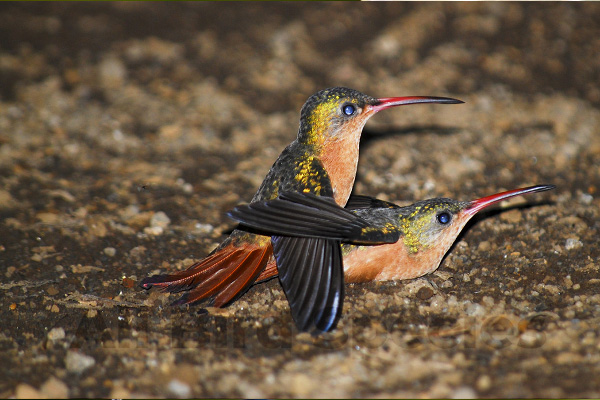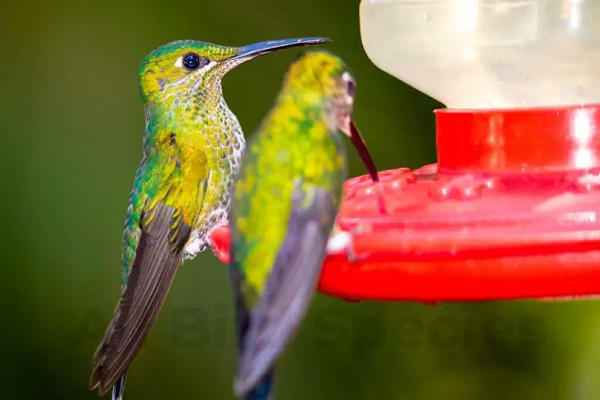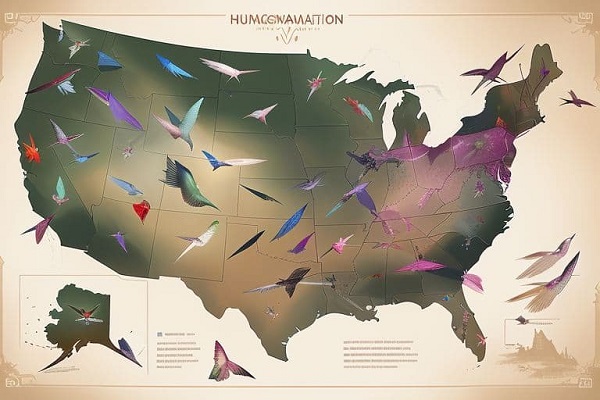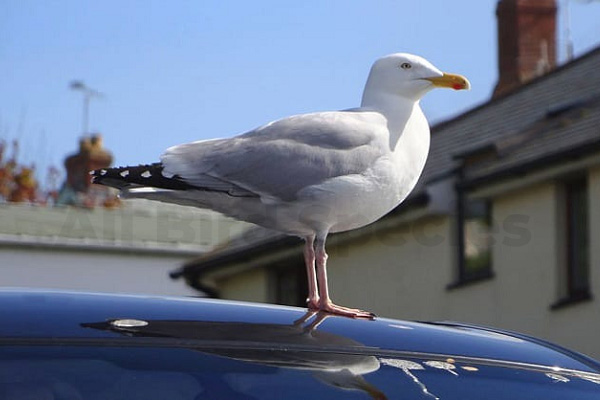10 Interesting Facts About Hummingbirds
Today, We are exploring interesting facts about hummingbirds. If you’re looking for the ultimate master of aerial acrobatics, look no further than the hummingbird. These tiny, feathered creatures are a wonder to behold, with their rapid wingbeats, sometimes thousands per minute, and iridescent feathers dazzling onlookers everywhere. But there’s so much more to these tiny marvels than meets the eye. Here are just a few interesting facts about hummingbirds that will surprise and delight you.
Key Takeaways:
- Hummingbirds are incredibly skilled fliers and can hover in place as well as fly forward, backward, and even upside down.
- These birds have an incredibly high metabolism and must consume half their body weight in nectar daily to survive.
- Hummingbirds are found only in the Americas, from Alaska down to Chile and Argentina.
- The smallest hummingbird species is the bee hummingbird, which is just 2.25 inches long from bill to tail.
- Some hummingbird species are known to migrate up to 2,000 miles twice a year.
Hummingbird Anatomy and Size
Hummingbirds are fascinating creatures, known for their tiny body size and unique physical characteristics. Most species range from 7 to 13 cm long, making them the smallest bird in the world. Their small size is due to the advantageous metabolic rate, which allows them to beat their wings up to 80 times per second. This high metabolism also requires them to consume up to twice their body weight in nectar daily.
These birds’ colorful feathers are more than just beautiful. They are used to attract mates during breeding season and aid in their movement through the thick forest canopies. Their long, slender beaks are specially adapted to reach deep into flowers to extract nectar and pollen, which is crucial for their survival and the pollination of plants.
Speaking of movement, hummingbirds are known for their incredible flying abilities. They can hover mid-air, fly backward, and change direction at high speeds due to their unique wing structure and the flexibility of their shoulders.

Hummingbird Anatomy Comparison
| Physical Feature | Ruby-throated Hummingbird | Anna’s Hummingbird | Black-chinned Hummingbird |
|---|---|---|---|
| Length (cm) | 7.5 | 10 | 9 |
| Weight (g) | 3 | 4 | 3.5 |
| Wingspan (cm) | 11 | 13 | 11 |
| Beak Length (cm) | 1.9 | 2.9 | 1.6 |
| Feather Colors can vary significantly | Green, Red, and White | Green, Grey, and Pink | Green and Black |
Did you know? Some species of hummingbirds have a gorget, a metallic patch on their throats that reflects iridescence when they catch the sunlight.
Facts About Hummingbirds: Diet and Feeding Habits
Hummingbirds have a unique diet that primarily consists of nectar from flowers, which is a sugar-rich liquid. They also consume small insects, including gnats, spiders, and mosquitoes, to supplement their diet with protein.
Because of their incredibly fast metabolism, hummingbirds need to consume a significant amount of nectar to sustain their energy levels. They feed by inserting their long, slender beaks into the center of the flower, using their specialized tongues to draw out the nectar. Hummingbirds are also known to feed on sap, honeydew, and fruit juices.
| Interesting Fact | Feeding Habits |
|---|---|
| Hummingbirds can consume twice their weight in
nectar and insects each day. |
Hummingbirds feed approximately five to eight
times per hour, spending around thirty to sixty seconds feeding at each flower. |
| Hummingbirds are drawn to brightly colored flowers,
particularly those with red and orange hues. |
Hummingbirds are attracted to plants that have
a high sugar content, typically visiting up to a thousand flowers in a single day. |
| One amazing hummingbird fact is that hummingbirds
are key pollinators, transferring pollen from one flower to another as they feed. |
Hummingbirds hover in front of the flower,
maintaining their position with their wings, and moving from one flower to the next with incredible precision. |
The hummingbird diet and feeding habits are essential to their survival, fueling their high-energy lifestyle and helping them thrive in their unique ecosystems.
Must Read: 150+ Cool Bird Names
Hummingbird Migration Patterns
Hummingbirds are famous for their migratory habits, covering impressive distances every year. These tiny birds embark on journeys spanning thousands of miles, with some species traveling from as far as Canada to Mexico and parts of Central America.
One of the most remarkable features of hummingbird migration is their ability to navigate. These birds use various cues, including the position of the sun and stars, the earth’s magnetic field, and visual landmarks to find their way. Hummingbirds have an excellent memory and can recognize feeding locations they visited years before.
| Hummingbird Species | Migratory Routes that can span large distances | Distance Covered |
|---|---|---|
| Ruby-throated Hummingbird | Eastern US to Central America | 2,000 miles |
| Anna’s Hummingbird | Western US to Mexico | Some hummingbirds migrate 1,000 miles
across the Gulf of Mexico, displaying their enormous endurance. |
| Rufous Hummingbird | Western North America to
Mexico and Central America |
3,000 miles |
Hummingbird migration is a challenging feat that requires a great deal of energy. These birds must consume enough nectar and insects to fuel their journey, and some species double their body weight in preparation for migration.
Despite their remarkable abilities, hummingbirds face threats and challenges during migration, including habitat loss, climate change, and collisions with windows, buildings, and other structures.
Visit: Silkie Chicken Eggs
The Importance of Studying Hummingbird Migration
Understanding hummingbird migration patterns is essential for conservation efforts, helping us identify crucial habitats and migration corridors. By studying these tiny birds, researchers can also gain insight into the effects of climate change and habitat loss on animal populations.
Hummingbird Courtship and Mating Rituals

Hummingbirds are not only fascinating for their physical abilities but also for their elaborate courtship displays and unique mating rituals. In most species, the males play a dominant role in attracting a mate.
During the courtship display, males will showcase their colorful feathers and perform aerial acrobatics to catch the attention of females. The males will then approach the female, creating a distinctive “U” shape with their bodies, and perform a high-speed dive to impress the female.
Once the female selects a mate, the pair will engage in a “dance” where they fly together in a synchronized motion before mating. Hummingbirds are monogamous during the breeding season, but some species may mate with multiple partners in a single season.
After mating, the female will build a nest and incubate her eggs while the male guards the territory and brings food to the female and chicks. In some species, the male may even take part in incubating the eggs and raising the chicks.
The courtship displays and mating rituals of hummingbirds are a wonder to behold, showcasing the unique behaviors and relationships of these tiny marvels of nature.
Related Article: Fun Facts About Northern Cardinal
Hummingbird Cognitive Abilities
Hummingbirds are not just tiny, colorful creatures with impressive flying skills. They also possess remarkable cognitive abilities that allow them to navigate complex environments and remember feeding locations with astounding accuracy.
Despite their small brains, hummingbirds have shown the capability to perform tasks such as identifying abstract concepts, recognizing shapes, and remembering patterns. Their exceptional visual memory allows them to locate specific flowers and remember which ones contain nectar, even after a long absence.
In fact, studies have shown that hummingbirds’ cognitive abilities are on par with those of some primates, including monkeys. Their unique biology allows hummingbirds, including the Calliope Hummingbird, to process information at incredible speeds, enabling them to make split-second decisions while in flight. This also includes their ability to enter a state of torpor during extreme conditions.
Examples of Hummingbird Cognition
| Hummingbird Species | Cognitive Abilities |
|---|---|
| Anna’s Hummingbird | Ability to count up to six, distinguish colors, and
remember feeding locations for up to 28 days |
| Rufous Hummingbird | Ability to remember specific flowers and their location,
as well as perform memory tests |
| Black-chinned Hummingbird | Ability to use spatial memory to find nectar sources,
remember locations of previously visited feeders, and recognize geometric patterns |
These examples demonstrate the diverse and impressive cognitive abilities of hummingbirds, elevating them from simple pollinators to intelligent and adaptable creatures.
As scientists continue to uncover more about the cognitive abilities of hummingbirds, we will gain a deeper appreciation for these fascinating tiny marvels.
Hummingbird Communication and Vocalizations
Hummingbirds are not just brilliant in their colors and flying abilities but also in their communication skills. They have devised many vocalizations and non-verbal methods to establish their dominance and attract mates.
Vocalizations of Hummingbirds
Hummingbirds use a variety of vocalizations to communicate with each other, including chirps, buzzes, trills, and the distinctive low-pitched hum. They can also adjust the pitch and volume of their vocalizations to convey different messages. For example, males attract females with high-pitched songs, and they defend their territories by producing aggressive calls.
Non-Verbal Communication Methods of Hummingbirds
Apart from vocalizations, hummingbirds also use non-verbal communication methods to convey their intentions. For instance, males perform elaborate courtship displays to attract females, showcasing their vividly colored feathers and acrobatic movements. Females, on the other hand, use different body postures and wing movements to signal their interest or resistance.
Facts About Hummingbirds: Conservation and Threats

Facts about Hummingbirds, with their small size and delicate beauty, are breathtaking creatures that deserve our attention and protection. However, they are facing several threats. Understanding hummingbird facts is crucial to take immediate action to ensure their survival for future generations.
Many organizations, including The Hummingbird Society, is an organization aiming to attract hummingbirds by conserving their habitats., are dedicated to conserving hummingbird populations and their habitats. These groups work to educate people on the importance of hummingbirds and their role in the ecosystem. They also collaborate with local communities to implement conservation initiatives and establish protected areas such as specialized hummingbird feeder zones for attracting hummingbirds.
| Threats to Hummingbirds | Conservation Efforts |
|---|---|
| Habitat loss due to deforestation
and urbanization |
Establishment of protected areas and the creation of
hummingbird-friendly gardens |
| Climate change | Research on the impact of climate change on hummingbirds
and the implementation of measures to mitigate its effects |
| Illegal wildlife trade | Monitoring and regulation of the trade of hummingbirds
and their products help protect these unique birds that can fly impressively. |
| Pesticides and herbicides | Advocacy for the use of eco-friendly products and
the regulation of toxic substances |
We must recognize the threats to hummingbirds and take action to protect them. By supporting conservation efforts and making changes in our own lives, such as using eco-friendly products and planting hummingbird-friendly gardens, we can contribute to the preservation of these magnificent creatures.
Hummingbird Species and Diversity
Hummingbirds are known for their incredible diversity, with over 300 species found in the Americas alone. From the tiny Bee Hummingbird, weighing in at just two grams, to the large and colorful Giant Hummingbird, each species has its unique characteristics and habitats.
Some species, such as the Ruby-throated Hummingbird, are well-known for their striking colors, while others, like the Plain-capped Starthroat, have more subtle, understated hues. Some species have curved beaks specifically adapted to their preferred food sources, such as the Sword-billed Hummingbird, which feeds on long tubular flowers.
| Common Name | Scientific Name | Habitat | Migration Pattern |
|---|---|---|---|
| Anna’s Hummingbird | Calypte anna | Western North America | Resident (non-migratory) |
| Rufous-tailed Hummingbird | Amazilia tzacatl | Central and South America | Long-distance migrant |
| Violet-crowned
Hummingbird |
Amazilia violiceps | Southwestern US & Mexico | Resident (non-migratory)
or short-distance migrant |
Hummingbirds play an important role in many ecosystems, serving as pollinators for a variety of flowering plants. However, habitat loss and climate change pose significant threats to many species of hummingbirds, making conservation efforts crucial.
Whether you are a bird-watching enthusiast or simply curious about these tiny marvels, exploring the diversity of hummingbirds is a fascinating journey.
Final Thought:
By now, you have a newfound appreciation for these tiny marvels of nature. From their unique physical traits and incredible flying abilities to their complex social lives and remarkable cognitive abilities, hummingbirds are truly extraordinary creatures. These fascinating hummingbird facts reveal just how remarkable they really are.
As you’ve learned, there are many different species of hummingbirds, each with its unique characteristics and habitats. Unfortunately, many of these species face threats from habitat loss and climate change, which is why conservation efforts are so crucial in protecting these birds for future generations to enjoy.
Whether you’re lucky enough to spot a hummingbird in your own backyard or simply admire them from afar, there’s no denying the beauty and wonder of these fascinating creatures. Keep exploring and learning more about these amazing birds, and you never know what other intriguing facts and behaviors you might discover!
Frequently Asked Questions
Q1: What is the unique ability of the hummingbird?
The unique ability of hummingbirds lies in their extraordinary flying skills. They are the only birds capable of sustained hovering in mid-air, thanks to their rapid wing beats, allowing them to feed on nectar from flowers with remarkable precision.
Q2: Why is it called a hummingbird?
The name “hummingbird” is derived from the humming sound created by their rapid wing movements, which can range from 50 to 80 beats per second. This distinctive sound is often heard as they hover near flowers while feeding.
Q3: What are some fun facts about hummingbirds wings?
Hummingbirds possess remarkable wings that allow them to perform incredible feats. Their wings can beat in a figure-eight pattern, enabling them to hover, fly backward, and even upside down. Additionally, their wings make up a significant portion of their body weight, emphasizing the importance of these adaptations for their unique flight capabilities.
Q4: How powerful is a hummingbird?
Despite their small size, hummingbirds are remarkably powerful. Their flight muscles make up about 30% of their body weight, allowing them to sustain rapid wing beats. This strength is crucial for their agile movements, especially during challenging tasks like hovering and rapid acceleration. These all are amazing facts about hummingbirds you need to know.
Q5: Is a hummingbird a smart bird?
Hummingbirds exhibit a level of intelligence that supports their survival and foraging strategies. They possess excellent memories for locating food sources and can learn to recognize specific flowers. While their brain size is relatively small, their problem-solving abilities and adaptability to changing environments showcase a form of avian intelligence that suits their unique ecological niche.






